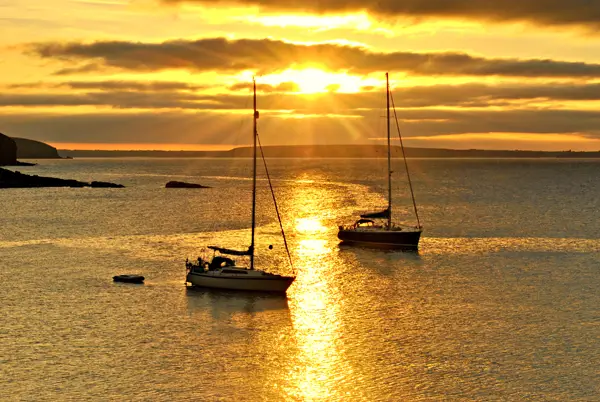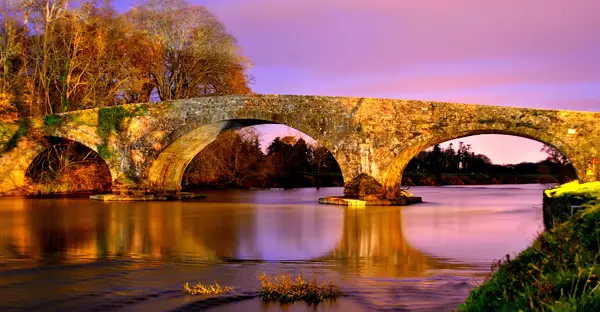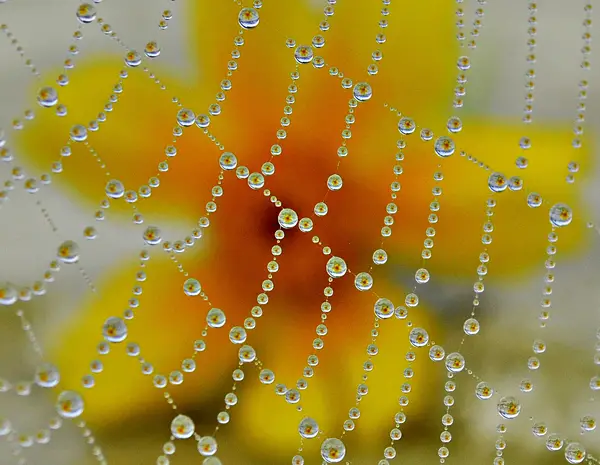Joe Ormonde is a photographer of landscapes, seascapes and wildlife. He comes from Kilsheelan, Co Tipperary.
He says his love and passion is for the great outdoors. His work has been shown on national TV stations and websites as well as worldwide magazines. He has also had his work featured in calendars including a calendar he produced himself for 2014.
His work has been put into worldwide competitions and has often won against top class competition.
Ireland Calling caught up with Joe and he was kind enough to answer our questions about his experiences as a photographer.

Ireland Calling: Why did you want to be a photographer and how did you get into it as a profession?
Joe Ormonde: I have had a great love of Photography from an early age, (I am 46 now) and even with some old film cameras, I would always have to stop in scenic areas to try to capture something that had caught my eye, which in turn would have been a major test of patience to my girlfriend and partner.
I worked as a Plastering contractor for many years, but always had an eye on Photography. So, around 2009 I decided to take a course in photography from Kilroy College, Dublin, it was a study at home course, and assignments were sent to me to complete. I really just wanted to know more about how DSLR cameras worked, and never dreamed that I could become as successful as
I have in such a short time.
IC: What training did you do?
JO: My training involved doing the assignments from Kilroy’s college, but mostly I completely am self-taught. I decided that I really needed to learn how a DSLR camera worked, so I practiced nonstop on settings, exposure times, lighting, and for about three years I took myself to mountains, valleys, rivers, streams, basically anywhere there would be a possible good photo at any time of morning, noon , and a lot of night time, and by making mistakes I eventually found a way to get great shots correctly. I am a big believer in self critique.
IC: What attracted you about your particular field of photography?
JO: Before I owned a DSLR camera, I used to travel to the west of Ireland a lot, I loved the Cliffs of Moher, Kylemore Abbey, Connemara, and all along that beautiful coastline. One day I was looking through a photo sharing site, and saw a profile picture of a lady who had visited all of these places on a photo safari from America, I made a comment on the photos, and we became great friends, she advised me on a lot of the camera and lens decisions I had to make.
I am happy to say that Anna Stephans has visited Ireland on a few occasions since, stayed with myself and Breda, and together we now get great photos in some of those amazing places around Ireland. I discovered just how amazing a photo can be when captured in the correct light, and timing, the passion was ignited.
IC: What would you say are the main challenges in getting the best pictures in your particular area?
JO: I truly believe I am blessed where I live in that I am in the Valley of Slievenamon Mountains in Tipperary, with the Comeragh Mountains to the other side of me in county Waterford, both counties separated by the wonderful River Suir. The challenges I face are finding the correct angle, time of day, or how high to go in the mountains. Night time photography is one of my favourite techniques, the results can be incredible, so perhaps the challenge I face there is making sure that light pollution do not get in the frame.
IC: How important to you are issues such as location, subject, lighting, time of day etc.
JO: When you take a photo, the one aspect always to remember is, you are controlling light. Light is the single most important aspect of Photography. Whether it is an early morning sunrise, a late night street scene, or a dreamy water flow, the settings of your camera has to be in the position to collect the correct amount of light to create your exposure.
The location is of vital importance also, it is always advisable to scan the area for the best possible position to set up, mainly to avoid anything that may distract attention in your frame from what your main subject will be, ie; shadows, distracting bushes, trees, growth, and especially people.
There are certain “rules” to adhere to also when framing your photo, rule of thirds being a crucial one, balance in your picture is vital. Time of day is also critical, strong mid-day sun will always make your life difficult, creating harsh light, and shadows, for example, architecture is best shot when the sunlight is coming from the side, that will bring better detail to your shot. So, early morning or late evening is best, when the sun is low in the sky.

IC: What would say are the top two or three pictures you’ve taken and what is that makes them so good or special to you?
JO: This is a really difficult one, I would find it impossible to select just three. However, I have chosen three images which have meaning for different reasons.
The first one is Kilsheelan Bridge, taken in the dark of night, on a very still and frosty night in March. There are many reasons why I love this photo, it has sold many times for me, won many awards, but I think, for me, this was the first real success I had at night Photography, there was a full moon shining straight up river, and some street lights which offered some light also, but needed to be kept out of the frame. The exposure time for this was over three minutes.
The second one I have chosen is the Dew Drop Pearls – a spider’s web full of early morning dew drops, with that lovely flower reflecting in every drop. The level of difficulty here is high, the trick is to find the right aperture in order to capture a wide depth of field, and get the focus on the drops. Needless to say getting this close to something so small and delicate is also a big challenge, so I was extremely happy with the result.
The third one is my favourite sunrise image that I have. I regularly rise early to capture such amazing scenes from our beautiful countryside. This one was taken in Dun More East in county Waterford, I got up at 5am to be there for the sunrise around 5.45am.
I was not disappointed, but to my joy, there was two yachts in the harbour which duly obliged lining up perfectly to allow the sun to squeeze between them, the control of the sun shining straight into my lens was tricky, but I think I managed to do pretty good. There is something energising, even spiritual about a sunrise like this, the peace and quiet cannot be described, except for the sound of the birds, and gentle movement of the sea, I will never forget the amazing good feeling I found that morning.
IC: What cameras and special equipment do you use?
JO: My preferred choice of equipment is Nikon, my first DSLR camera was an entry level Nikon D3000, I found that this was a great camera to get used to the settings and controls of Digital Photography, and led me perfectly to the D7000 that I now have.
I have an 18-55 mm lens, 70-300mm lens, a 35mm lens, and a super wide 14mm lens, a speedlight SB-700 flash, tripod, and some polarizing filters, I will add some more lenses in the very near future. I also use some filters for difficult lighted areas, such as over shadowed of over highlighted skies, etc.. I use Picasa 3 for any post processing, which is always very slight, I prefer to try to achieve as much through the camera as I possibly can, I do not possess Photoshop.
My passion is for what I see as much as what I can create, so even in this era of easy manipulation of images, that is just not an option for me, I pride myself on being a purist, in as much as I possibly can. I also have a canon printer and print some of my own work if I can, but when I cannot, I am lucky enough to be able to turn to PJ O Neill, and his great staff in Sureprint, Clonmel.
IC: Everyone can have access to good cameras nowadays. What does it take to stand out as a professional?
JO: It is true that anyone can buy top of the range cameras and lenses, and possibly even if the photos are of bad quality, if they have the money, the image can be manipulated enough to create a masterpiece in Photoshop. But, because I prefer to try to bring to a print as close to what I see through the lens as much as possible, I will always advise newcomers to Photography to begin at the bottom, buy a DSLR that is not over complicated.
Try to shoot in manual as much as possible, and forget that there is an auto option built into your camera, Auto will get you decent photos a lot of the time, but in difficult areas, the camera will only take what the camera can see,… so get used to the three settings that control light and exposure, Aperture, Shutter speed, and ISO,.. white balance is also a necessary setting that will need to be mastered in order to get the most from your camera.
When you have a knowledge of how all these work together, then it is up to the person to be able to get the photos that will be prize winners. Be original, and take shots of your subject from different angles, always consider where the light is coming from, this can often mean waiting for cloud to move, someone to step out of your frame, or just waiting for a shadow to lighten, but, most of all be honest to yourself of what you think about your capture, it is not unusual to come home with a 100 images, but with maybe one or two that will stand out against other top quality Photographers, if you are lucky.
In addition, don’t be afraid to break the rules, persevere to get the image that you want inside your head.

IC: What tips and advice can you pass on to any of our readers who might be interested in photography, especially those in your specialist field?
JO: My specialist area is landscapes, seascapes, sunrise / sunset, so I will try to give a little knowledge on these. For any landscape, it is vital to prepare before you leave, make sure you have all the necessary gear, the obvious are cameras, lenses, wide angle lenses are best for those great landscape vistas. Some filters will be necessary too, a polarising filter is great to make grey dull skies a little more exciting.
Some accessories like extra batteries, lens cloth, dust sprayer, and especially a tripod are crucial. When taking sunsets, or sunrises, take time to change your settings, like white balance, and shutter speeds, experiment with all of these controls and it is amazing what results that can be achieved.
One of the most common mistakes is shooting in midday sun,.. shadows and harsh sunlight will be a huge problem on a good summers day, so try to get the best of the early morning low light, or late evening.
If the shutter speed for your shot is anything less than 1/80 second, it is best to use a tripod, unless you have an incredibly steady hand, any movement will cause blur in the image.
The biggest tip of all is to use your manual settings as much as possible, try not to use the auto unless there is absolutely no choice. Although the camera will be built with a flash, it is much better to purchase a flash gun, which is much stronger and allows to use a faster shutter speed especially indoors, and again avoid that annoying blurred image.
IC: What kind of projects are you planning next?
JO: I am currently in the early days of offering Photographic tours of Ireland, which I am sure will have anyone who has Photography in their blood, drooling at the prospect of capturing the amazing locations that I can take them to. I have taken some tourists around Ireland, and advised them on which camera to purchase, and given some guidance on how to use their camera, and get the best shots.
This is an area I have had a feeling for with a long time, and hopefully I will enjoy some happy tours next year. So if there is anyone who would like to be taken to these wonderful locations to get your own shots, or if you require a little tuition, please feel free to contact me, at, joe.ormonde@gmail.com
IC: Is there one special picture you’d like to get that has so far eluded you? Tell us about it and how you plan to get it in the future.
JO: I would love to capture a strike of lightening in spectacular style, we do not get a lot of electrical storms here, so the opportunity does not arrive very often.But if it happens, I will want to capture it in an old graveyard, or from a high hilltop, which will be spread out all across the valley below.
I would also dearly love to get some close shots of animals in the wild, Eagles particularly, which are an awesome bird. I would also love to take an arctic, or even better an Antarctic cruise, northern lights, Polar bears, and the ice really appeals to me. But for now, I will settle for always trying to achieve better images around my own beautiful Tipperary, and Ireland.
IC: What advice would you give to people wanting to become a professional photographer?
JO: My advice to anyone wanting to become a Photographer would be, take your time, get to know your camera step by step, master different styles one at a time. Trying to understand everything in a few days is not possible. Practice and experiment non stop, and be prepared to admit and understand your mistakes.
In order to measure your progress, enter competitions, and forums, and photo sharing sites. Photographers are a very helpful and friendly bunch I find, and there is a lot of websites which Professionals are only too willing to help beginners. You can only take what you see, so stamp your own style on your work, it is so easy to copy others, but not very inspiring if all of your work is similar to that of a local pro. Go find your own ideas, and make those images come true.
Thanks to Joe for answering our questions. To find out more about him check out his Facebook page, his Flickr page, or his website.
art.html”]